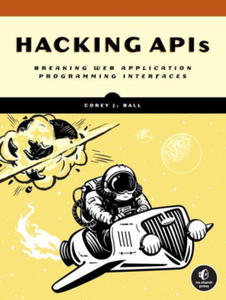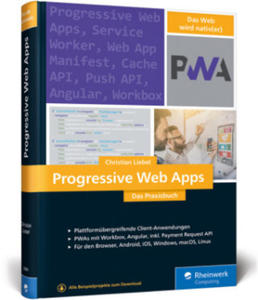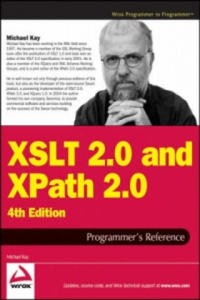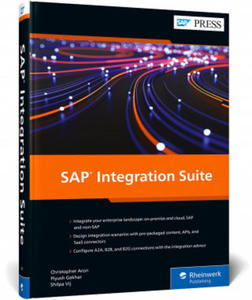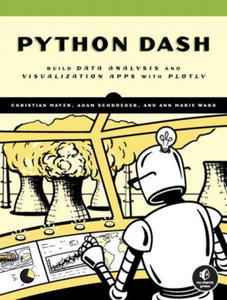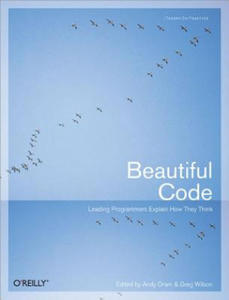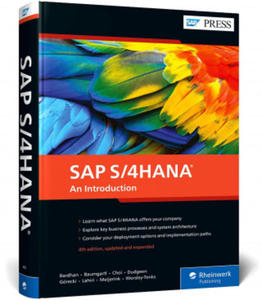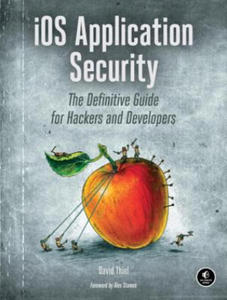allcollect api press
- znaleziono 15 produktów w 3 sklepach
Hacking Apis No Starch Press,US
Książki / Literatura obcojęzyczna
Hacking APIs is a crash course in web API security testing that will prepare you to penetration-test APIs, reap high rewards on bug bounty programs, and make your own APIs more secure.Hacking APIs is a crash course on web API security testing that will prepare you to penetration-test APIs, reap high rewards on bug bounty programs, and make your own APIs more secure. You ll learn how REST and GraphQL APIs work in the wild and set up a streamlined API testing lab with Burp Suite and Postman. Then you ll master tools useful for reconnaissance, endpoint analysis, and fuzzing, such as Kiterunner and OWASP Amass. Next, you ll learn to perform common attacks, like those targeting an API s authentication mechanisms and the injection vulnerabilities commonly found in web applications. You ll also learn techniques for bypassing protections against these attacks. In the book s nine guided labs, which target intentionally vulnerable APIs, you ll practice:Enumerating APIs users and endpoints using fuzzing techniquesUsing Postman to discover an excessive data exposure vulnerabilityPerforming a JSON Web Token attack against an API authentication processCombining multiple API attack techniques to perform a NoSQL injectionAttacking a GraphQL API to uncover a broken object level authorization vulnerability By the end of the book, you ll be prepared to uncover those high-payout API bugs other hackers aren t finding and improve the security of applications on the web.
Sklep: Libristo.pl
Bieganie długodystansowe - Christof Baur, Bernd Thurner
Książki & Multimedia > Książki
Opis - Dla wielu osób motywacją do biegania jest radość i przyjemność z samej możliwości poruszania się, odczuwania siły własnego organizmu oraz możliwość przełamywania jego ograniczeń. Poradnik autorstwa doświadczonych biegaczy pokazuje, w jaki sposób uzyskać optymalne umiejętności i przekształcić je w najwyższą formę. Zapoznaje nas z technikami budowania wytrzymałości i siły motorycznej oraz zasadami odpowiedniego żywienia, które pomogą przyspieszyć regenerujący wypoczynek po treningu i znacznie poprawić wyniki w zawodach. W książce znajdziemy osiem zaawansowanych programów treningowych, będziemy też mogli stworzyć indywidualny program ćwiczeń dostosowany do naszych możliwości. Nazwa - Bieganie długodystansowe Oryginalny tytuł - Laufen bis zum Marathon Autor - Christof Baur, Bernd Thurner Oprawa - Miękka Wydawca - RM Kod ISBN - 9788377735596 Kod EAN - 9788377735596 Wydanie - 3 Rok wydania - 2016 Język - polski Format - 16.0x23.0cm Ilość stron - 160 Podatek VAT - 5% Premiera - 2016-05-25
Sklep: InBook.pl
Progressive Web Apps Rheinwerk Verlag GmbH
Książki / Literatura obcojęzyczna
Progressive Web Apps (PWAs) sind eine moderne und zeitgemäße Form der Webapp. Ausgestattet mit allen Möglichkeiten wie Offlinefähigkeit, Push-Benachrichtigungen und Datensynchronisation können Sie mit modernen Webtechnologien (HTML5, CSS3, JavaScript) plattformübergreifend beeindruckende Anwendungen entwickeln, die sich wie native Apps verhalten.Unser Buch vermittelt alles notwendige Hintergrundwissen im Umgang mit dem Web App Manifest, Service Worker, Cache und Push API. Erste eigene PWAs entwickeln Sie mit Workbox und Angular. Inkl. Migrationsstrategien mit Apache Cordova und GitHub Electron sowie Umgang mit der Payment Request API.Aus dem Inhalt:Moderne Webtechnologien in der AnwendungZehn Eigenschaften, die PWA einzigartig machenWeb App Manifest: Aussehen der App definierenUmgang mit dem Service WorkerCache APIPush APIPWA und AngularSo läuft's auf Desktop und MobileValidierung mit Lighthouse und Co.Migrationsstrategien mit Cordova und ElectronPayment Request APIGalileo Press heißt jetzt Rheinwerk Verlag.
Sklep: Libristo.pl
XSLT 2.0 and XPath 2.0 Programmer's Reference 4e John Wiley & Sons Inc
Książki / Literatura obcojęzyczna
This book is primarily a practical reference book for professional XSLT developers. It assumes no previous knowledge of the language, and many developers have used it as their first introduction to XSLT; however, it is not structured as a tutorial, and there are other books on XSLT that provide a gentler approach for beginners. The book does assume a basic knowledge of XML, HTML, and the architecture of the Web, and it is written for experienced programmers. There's no assumption that you know any particular language such as Java or Visual Basic, just that you recognize the concepts that all programming languages have in common. The book is suitable both for XSLT 1.0 users upgrading to XSLT 2.0, and for newcomers to XSLT. The book is also equally suitable whether you work in the Java or .NET world. As befits a reference book, a key aim is that the coverage should be comprehensive and authoritative. It is designed to give you all the details, not just an overview of the 20 percent of the language that most people use 80 percent of the time.It's designed so that you will keep coming back to the book whenever you encounter new and challenging programming tasks, not as a book that you skim quickly and then leave on the shelf. If you like detail, you will enjoy this book; if not, you probably won't. But as well as giving the detail, this book aims to explain the concepts, in some depth. It's therefore a book for people who not only want to use the language but who also want to understand it at a deep level. The book aims to tell you everything you need to know about the XSLT 2.0 language. It gives equal weight to the things that are new in XSLT 2.0 and the things that were already present in version 1.0. The book is about the language, not about specific products. However, there are appendices about Saxon (the author's own implementation of XSLT 2.0), about the Altova XSLT 2.0 implementation, and about the Java and Microsoft APIs for controlling XSLT transformations, which will no doubt be upgraded to handle XSLT 2.0 as well as 1.0. A third XSLT 2.0 processor, Gestalt, was released shortly before the book went to press, too late to describe it in any detail. But the experience of XSLT 1.0 is that there has been a very high level of interoperability between different XSLT processors, and if you can use one of them, then you can use them all.In the previous edition we split XSLT 2.0 and XPath 2.0 into separate volumes. The idea was that some readers might be interested in XPath alone. However, many bought the XSLT 2.0 book without its XPath companion and were left confused as a result; so this time, the material is back together. The XPath reference information is in self-contained chapters, so it should still be accessible when you use XPath in contexts other than XSLT. The book does not cover XSL Formatting Objects, a big subject in its own right. Nor does it cover XML Schemas in any detail. If you want to use these important technologies in conjunction with XSLT, there are other books that do them justice. This book contains twenty chapters and eight appendixes (the last of which is a glossary) organized into four parts. The following section outlines what you can find in each part, chapter, and appendix. Part I: Foundations: The first part of the book covers essential concepts. You should read these before you start coding.If you ignore this advice, as most people do, then you read them when you get to that trough of despair when you find it impossible to make the language do anything but the most trivial tasks. XSLT is different from other languages, and to make it work for you, you need to understand how it was designed to be used. Chapter 1: XSLT in Context: This chapter explains how XSLT fits into the big picture: how the language came into being and how it sits alongside other technologies. It also has a few simple coding examples to keep you alert. Chapter 2: The XSLT Processing Model: This is about the architecture of an XSLT processor: the inputs, the outputs, and the data model. Understanding the data model is perhaps the most important thing that distinguishes an XSLT expert from an amateur; it may seem like information that you can't use immediately, but it's knowledge that will stop you making a lot of stupid mistakes. Chapter 3: Stylesheet Structure: XSLT development is about writing stylesheets, and this chapter takes a bird's eye view of what stylesheets look like.It explains the key concepts of rule-based programming using templates, and explains how to undertake programming-in-the-large by structuring your application using modules and pipelines. Chapter 4: Stylesheets and Schemas: A key innovation in XSLT 2.0 is that stylesheets can take advantage of knowledge about the structure of your input and output documents, provided in the form of an XML Schema. This chapter provides a quick overview of XML Schema to describe its impact on XSLT development. Not everyone uses schemas, and you can skip this chapter if you fall into that category. Chapter 5: The Type System: XPath 2.0 and XSLT 2.0 offer strong typing as an alternative to the weak typing approach of the 1.0 languages. This means that you can declare the types of your variables, functions, and parameters, and use this information to get early warning of programming errors. This chapter explains the data types available and the mechanisms for creating user-defined types. Part II: XSLT and XPath Reference: This section of the book contains reference material, organized in the hope that you can easily find what you need when you need it.It's not designed for sequential reading, though you might well want to leaf through the pages to discover what's there. Chapter 6: XSLT Elements: This monster chapter lists all the XSLT elements you can use in a stylesheet, in alphabetical order, giving detailed rules for the syntax and semantics of each element, advice on usage, and examples. This is probably the part of the book you will use most frequently as you become an expert XSLT user. It's a "no stone unturned" approach, based on the belief that as a professional developer you need to know what happens when the going gets tough, not just when the wind is in your direction. Chapter 7: XPath Fundamentals: This chapter explains the basics of XPath: the low-level constructs such as literals, variables, and function calls. It also explains the context rules, which describe how the evaluation of XPath expressions depends on the XSLT processing context in which they appear. Chapter 8: XPath: Operators on Items: XPath offers the usual range of operators for performing arithmetic, boolean comparison, and the like.However, these don't always behave exactly as you would expect, so it's worth reading this chapter to see what's available and how it differs from the last language that you used. Chapter 9: XPath: Path Expressions: Path expressions are what make XPath special; they enable you to navigate around the structure of an XML document. This chapter explains the syntax of path expressions, the 13 axes that you can use to locate the nodes that you need, and associated operators such as union, intersection, and difference. Chapter 10: XPath: Sequence Expressions: Unlike XPath 1.0, in version 2.0 all values are sequences (singletons are just a special case). Some of the most important operators in XPath 2.0 are those that manipulate sequences, notably the "for" expression, which translates one sequence into another by applying a mapping. Chapter 11: XPath: Type Expressions: The type system was explained in Chapter 5; this chapter explains the operations that you can use to take advantage of types. This includes the "cast" operation which is used to convert values from one type to another.A big part of this chapter is devoted to the detailed rules for how these conversions are done.Chapter 12: XSLT Patterns: This chapter returns from XPath to a subject that's specific to XSLT. Patterns are used to define template rules, the essence of XSLT's rule-based programming approach. The reason for explaining them now is that the syntax and semantics of patterns depends strongly on the corresponding rules for XPath expressions. Chapter 13: The Function Library: XPath 2.0 includes a library of functions that can be called from any XPath expression; XSLT 2.0 extends this with some additional functions that are available only when XPath is used within XSLT. The library has grown immensely since XPath 1.0. This chapter provides a single alphabetical reference for all these functions. Chapter 14: Regular Expressions: Processing of text is an area where XSLT 2.0 and XPath 2.0 are much more powerful than version 1.0, and this is largely through the use of constructs that exploit regular expressions. If you're familiar with regexes from languages such as Perl, this chapter tells you how XPath regular expressions differ. If you're new to the subject, it explains it from first principles.Chapter 15: Serialization: Serialization in XSLT means the ability to generate a textual XML document from the tree structure that's manipulated by a stylesheet. This isn't part of XSLT processing proper, so (following W3C's lead) it's separated it into its own chapter. You can control serialization from the stylesheet using an declaration, but many products also allow you to control it directly via an API. Part III: Exploitation: The final section of the book is advice and guidance on how to take advantage of XSLT to write real applications. It's intended to make you not just a competent XSLT coder, but a competent designer too. The best way of learning is by studying the work of others, so the emphasis here is on practical case studies. Chapter 16: Extensibility: This chapter describes the "hooks" provided in the XSLT specification to allow vendors and users to plug in extra functionality. The way this works will vary from one implementation to another, so we can't cover all possibilities, but one important aspect that the chapter does cover is how to use such extensions and still keep your code portable.Chapter 17: Stylesheet Design Patterns: This chapter explores a number of design and coding patterns for XSLT programming, starting with the simplest "fill-in-the-blanks" stylesheet, and extending to the full use of recursive programming in the functional programming style, which is needed to tackle problems of any computational complexity. This provides an opportunity to explain the thinking behind functional programming and the change in mindset needed to take full advantage of this style of development. Chapter 18: Case Study: XMLSpec: XSLT is often used for rendering documents, so where better to look for a case study than the stylesheets used by the W3C to render the XML and XSLT specifications, and others in the same family, for display on the web? The resulting stylesheets are typical of those you will find in any publishing organization that uses XML to develop a series of documents with a compatible look-and-feel. Chapter 19: Case Study: A Family Tree: Displaying a family tree is another typical XSLT application.This example with semi-structured data-a mixture of fairly complex data and narrative text-that can be presented in many different ways for different audiences. It also shows how to tackle another typical XSLT problem, conversion of the data into XML from a legacy text-based format. As it happens, this uses nearly all the important new XSLT 2.0 features in one short stylesheet. But another aim of this chapter is to show a collection of stylesheets doing different jobs as part of a complete application. Chapter 20: Case Study: Knight's Tour: Finding a route around a chessboard where a knight visits every square without ever retracing its steps might sound a fairly esoteric application for XSLT, but it's a good way of showing how even the most complex of algorithms are within the capabilities of the language. You may not need to tackle this particular problem, but if you want to construct an SVG diagram showing progress against your project plan, then the problems won't be that dissimilar. Part IV: Appendices: A ppendix A: XPath 2.0 Syntax Summary: Collects the XPath grammar rules and operator precedences into one place for ease of reference.Appendix B: Error Codes: A list of all the error codes defined in the XSLT and XPath language specifications, with brief explanations to help you understand what's gone wrong. Appendix C: Backward Compatibility: The list of things you need to look out for when converting applications from XSLT 1.0. Appendix D: Microsoft XSLT Processors: Although the two Microsoft XSLT processors don't yet support XSLT 2.0, we thought many readers would find it useful to have a quick summary here of the main objects and methods used in their APIs. Appendix E: JAXP: the Java API for XML Processing: JAXP is an interface rather than a product. Again, it doesn't have explicit support yet for XSLT 2.0, but Java programmers will often be using it in XSLT 2.0 projects, so the book includes an overview of the classes and methods available. Appendix F: Saxon: At the time of writing Saxon (developed by the author of this book) provides the most comprehensive implementation of XSLT 2.0 and XPath 2.0, so its interfaces and extensions are covered in some detail. Appendix G: Altova: Altova, the developers of XML Spy, have an XSLT 2.0 processor that can be used either as part of the development environment or as a freestanding component.This appendix gives details of its interfaces. Appendix H: Glossary Note: CD-ROM/DVD and other supplementary materials are not included as part of eBook file.
Sklep: Libristo.pl
SAP Integration Suite SAP Press
Książki / Literatura obcojęzyczna
SAP's integration technologies are now combined-but what is SAP Integration Suite, and how do you use it to manage an integrated enterprise landscape? In this book, get the answers to these questions and more as you take a tour of the new suite. Then get step-by-step instructions for using key capabilities such as prepackaged integrations, open APIs, integration scenarios, the Integration Advisor, and more. Master the complete integration suite! In this book, you'll learn about: a. The Integration LandscapeDiscover SAP's new approach to integration. See how the SAP Integration Suite encompasses a series of integration technologies, including the architecture and complimentary intelligent technologies. b. Key Capabilities Learn about services like SAP API Business Hub for pre-packaged accelerators, the cloud integration service for application integration, the integration advisor for automated integration, and SAP Event Mesh for event-driven integration. c. Integration Scenarios Use integration capabilities to connect your cloud or on-premise systems. Create data flows using prepackaged integrations, perform hybrid integration with APIs, use cloud integration to design, deploy, and run integration flows, and more. Highlights include: 1) Pre-packaged integrations2) API management3) Application integration4) Integration advisor5) AI-driven integration6) Third-party integration7) Event-driven integration8) SAP Event Mesh9) Architecture10) Intelligent enterprise
Sklep: Libristo.pl
SAP Cloud Platform Integration SAP Press
Książki / Literatura obcojęzyczna
Bring your cloud and on-premise applications together with SAP Cloud Integration (formerly SAP Cloud Platform Integration) in the SAP Integration Suite! Integrate processes and data in your system, step-by-step, by developing and configuring integration flows in Cloud Foundry and Neo environments. Enhance your integrations with APIs, open connectors, and custom adapters. Explore prepackaged content in the content catalog, debug and secure integration projects, enable B2B integration, and more! a. Fundamentals Find out how SAP Cloud Integration fits into SAP's cloud strategy. Whether you're in the Cloud Foundry or Neo environment, explore its architecture and tools, and learn how to run your first integration flow. b. Integration DevelopmentUsing prepackaged integration content? Developing custom integrations? Either way, this guide has you covered with step-by-step instructions and screenshots. Master the SAP Cloud Integration runtime, including processes like debugging and error handling. c. SAP Integration SuitePut the new SAP Integration Suite to work. See how capabilities like APIs, application connectors, and the Integration Advisor work with SAP Cloud Integration. d. Updated and ExpandedRevised to include new SAP Cloud Integration features including open connectors, ELSTER integration, AMQP and JMS adapters, integration flow processing simulation, and how to use the service on both Cloud Foundry and Neo. 1) Integration flows2) Integration content catalog (SAP API Business Hub)3) Modeling synchronous and asynchronous scenarios4) Debugging5) Security6) B2B integration7) Root cause analysis8) Web UI9) Message mappings10) SAP Integration Suite11) SAP API Management
Sklep: Libristo.pl
Ściszone nagle życie - Dariusz Suska
Książki & Multimedia > Książki
Opis - Dariusz Suska urodził się w 1968 roku w Złotoryi. Skończył fizykę na Uniwersytecie Warszawskim. Wydał sześć tomów wierszy, świetnie przyjętych przez krytykę i nominowanych do najważniejszych nagród literackich (Nike, Silesius i Gdynia): Rzeczy które były światem (1992), DB 6160221 (1998), Wszyscy nasi drodzy zakopani (2000), Cała w piachu (2004), Czysta ziemia (2008) i Duchy dni (2012). Mieszka w Warszawie. Nowe wiersze Dariusza Suski odtwarzają (stwarzają na nowo?) świat jego pierwszych dziecięco-młodzieńczych przeżyć i doznań. To nie jest świat sielsko-anielski; dominują w nim ciemne barwy i czarne wersy. Pamięć i wyobraźnia poety działają jak szkło / powiększające czas do nierzeczywistości którą jest, a w pierwszych doświadczeniach dostrzega przede wszystkim uwierające nic. To jest intensywna, poruszająca poezja. Marian Stala Nazwa - Ściszone nagle życie Autor - Dariusz Suska Oprawa - Miękka Wydawca - Znak Kod ISBN - 9788324043170 Kod EAN - 9788324043170 Wydanie - 1 Rok wydania - 2016 Język - polski Format - 20.5x14.4 Ilość stron - 78 Podatek VAT - 5% Premiera - 2016-10-12
Sklep: InBook.pl
Pyqgis Programmer's Guide Locate Press
Książki / Literatura obcojęzyczna
Welcome to the world of PyQGIS, the blending of Python and QGIS to extend and enhance your open source GIS toolbox.This book covers version 3.0 of the QGIS application programming interface (API), featuring Python 3. With PyQGIS you can write scr
Sklep: Libristo.pl
Book Of Dash No Starch Press,US
Książki / Literatura obcojęzyczna
Create stunning interactive dashboard applications in Python with the Dash visualization and data analysis tool. Build interfaces that make sense of your data, and make it pretty.A swift and practical introduction to building interactive data visualization apps in Python, known as dashboards. You ve seen dashboards before; think election result visualizations you can update in real time, or population maps you can filter by demographic. With the Python Dash library you ll create analytic dashboards that present data in effective, usable, elegant ways in just a few lines of code. The book is fast-paced and caters to those entirely new to dashboards. It will talk you through the necessary software, then get straight into building the dashboards themselves. You ll learn the basic format of a Dash app in a Twitter analysis dashboard that tracks numbers of likes over time. You ll then build up skills through three more sophisticated projects. The first compares world data in three areas: volume of internet usage, percentage of parliament seats held by women, and CO2 emissions; the second is a financial portfolio dashboard that models your investments; and the third is visualizesmachine learning algorithms. The final chapter sets you up with some useful final skills, like debugging your code and applying color themes. In this book you will:Create and run your first Dash appsUse the pandas library to manipulate and analyze social media and API dataCreate a variety of stunning and effective charts using PlotlyLearn to use bar charts, chloropleth maps, contour plots, and moreExamine and build on existing apps written by the pros Dash combines several technologies to get you building dashboards quickly and efficiently. This book will do the same.
Sklep: Libristo.pl
Rust For Rustaceans No Starch Press
Książki / Literatura obcojęzyczna
Master professional-level coding in Rust.For developers who
Sklep: Libristo.pl
Beautiful Code O'Reilly Media
Książki / Literatura obcojęzyczna
How do the experts solve difficult problems in software development? In this unique and insightful book, leading computer scientists offer case studies that reveal how they found unusual, carefully designed solutions to high-profile projects. You will be able to look over the shoulder of major coding and design experts to see problems through their eyes. This is not simply another design patterns book, or another software engineering treatise on the right and wrong way to do things. The authors think aloud as they work through their project's architecture, the tradeoffs made in its construction, and when it was important to break rules. "Beautiful Code" is an opportunity for master coders to tell their story. All author royalties will be donated to Amnesty International. The book includes the following contributions: "Beautiful Brevity: Rob Pike's Regular Expression Matcher" by Brian Kernighan, Department of Computer Science, Princeton University; "Subversion's Delta Editor: Interface as Ontology" by Karl Fogel, editor of "QuestionCopyright.org", Co-founder of Cyclic Software, the first company offering commercial CVS support; "The Most Beautiful Code I Never Wrote" by Jon Bentley, Avaya Labs Research; "Finding Things" by Tim Bray, Director of Web Technologies at Sun Microsystems, co-inventor of XML 1.0; "Correct, Beautiful, Fast (In That Order): Lessons From Designing XML Validators" by Elliotte Rusty Harold, Computer Science Department at Polytechnic University, author of "Java I/O, Java Network Programming", and "XML in a Nutshell" (O'Reilly); and, "The Framework for Integrated Test: Beauty through Fragility" by Michael Feathers, consultant at Object Mentor, author of "Working Effectively with Legacy Code" (Prentice Hall). It also includes: "Beautiful Tests" by Alberto Savoia, Chief Technology Officer, Agitar Software Inc; "On-the-Fly Code Generation for Image Processing" by Charles Petzold, author "Programming Windows and Code: The Hidden Language of Computer Hardware and Software" (both Microsoft Press); "Top Down Operator Precedence" by Douglas Crockford, architect at Yahoo!Inc, Founder and CTO of State Software, where he discovered JSON; "Accelerating Population Count" by Henry Warren, currently works on the Blue Gene petaflop computer project Worked for IBM for 41 years; "Secure Communication: The Technology of Freedom" by Ashish Gulhati, Chief Developer of Neomailbox, an Internet privacy service Developer of Cryptonite, an OpenPGP-compatible secure webmail system; and, "Growing Beautiful Code in BioPerl" by Lincoln Stein, investigator at Cold Spring Harbor Laboratory - develops databases and user interfaces for the Human Genome Project using the Apache server and its module API.It also includes: "The Design of the Gene Sorter" by Jim Kent, Genome Bioinformatics Group, University of California Santa Cruz; "How Elegant Code Evolves With Hardware: The Case Of Gaussian Elimination" by Jack Dongarra, University Distinguished Professor of Computer Science in the Computer Science Department at the University of Tennessee, also distinguished Research Staff member in the Computer Science and Mathematics Division at Oak Ridge National Laboratory (ORNL) and Piotr Luszczek, Research Professor at the University of Tennessee; "Beautiful Numerics" by Adam Kolawa, co-founder and CEO of Parasoft; and, "The Linux Kernel Driver Model" by Greg Kroah-Hartman, SuSE Labs/Novell, Linux kernel maintainer for driver subsystems, author of "Linux Kernel in a Nutshell", co-author of "Linux Device Drivers, 3rd Edition" (O'Reilly).It also includes: "Another Level of Indirection" by Diomidis Spinellis, Associate Professor at the Department of Management Science and Technology at the Athens University of Economics and Business, Greece; "An Examination of Python's Dictionary Implementation" by Andrew Kuchling, longtime member of the Python development community, and a director of the Python Software Foundation; "Multi-Dimensional Iterators in NumPy" by Travis Oliphant, Assistant Professor in the Electrical and Computer Engineering Department at Brigham Young University; and, "A Highly Reliable Enterprise System for NASAs Mars Rover Mission" by Ronald Mak, co-founder and CTO of Willard & Lowe Systems, Inc, formerly a senior scientist at the Research Institute for Advanced Computer Science on contract to NASA Ames.It also includes: "ERP5: Designing for Maximum Adaptability" by Rogerio de Carvalho, researcher at the Federal Center for Technological Education of Campos (CEFET Campos), Brazil and Rafael Monnerat, IT Analyst at CEFET Campos, and an offshore consultant for Nexedi SARL; "A Spoonful of Sewage" by Bryan Cantrill, Distinguished Engineer at Sun Microsystems, where he has spent most of his career working on the Solaris kernel; "Distributed Programming with MapReduce" by Jeff Dean and Sanjay Ghemawat, Google Fellows in Google's Systems Infrastructure Group; "Beautiful Concurrency" by Simon Peyton Jones, Microsoft Research, key contributor to the design of the functional language Haskell, and lead designer of the Glasgow Haskell Compiler (GHC); and, "Syntactic Abstraction: The syntax-case expander" by Kent Dybvig, Developer of Chez Scheme and author of the Scheme Programming Language. It also includes: "Object-Oriented Patterns and a Framework for Networked Software" by William Otte, a Ph.D. student in the Department of Electrical Engineering and Computer Science (EECS) at Vanderbilt University and Doug Schmidt, Full Professor in the Electrical Engineering and Computer Science (EECS) Department, Associate Chair of the Computer Science and Engineering program, and a Senior Research Scientist at the Institute for Software Integrated Systems (ISIS) at Vanderbilt University; "Integrating Business Partners the RESTful Way" by Andrew Patzer, Director of the Bioinformatics Program at the Medical College of Wisconsin; and, "Beautiful Debugging" by Andreas Zeller, computer science professor at Saarland University, author of "Why Programs Fail: A Guide to Systematic Debugging" (Morgan Kaufman).It also includes: "Code That's Like an Essay" by Yukihiro Matsumoto, inventor of the Ruby language; "Designing Interfaces Under Extreme Constraints: the Stephen Hawking editor" by Arun Mehta, professor and chairman of the Computer Engineering department of JMIT, Radaur, Haryana, India; "Emacspeak: The Complete Audio Desktop" by TV Raman, Research Scientist at Google where he focuses on web applications; "Code in Motion" by Christopher Seiwald, founder and CTO of Perforce Software and Laura Wingerd, vice president of product technology at Perforce Software, author of "Practical Perforce" (O'Reilly); and, "Writing Programs for 'The Book'" by Brian Hayes who writes the Computing Science column in American Scientist magazine, author of "Infrastructure: A Field Guide to the Industrial Landscape"(W.W. Norton).
Sklep: Libristo.pl
SAP S/4HANA SAP Press
Książki / Literatura obcojęzyczna
Interested in what SAP S/4HANA has to offer? Find out with this big-picture guide! Take a tour of SAP S/4HANA functionality for your key lines of business: finance, manufacturing, supply chain, sales, and more. Preview SAP S/4HANA's architecture, and discover your options for reporting, extensions, and adoption. With insights into the latest intelligent technologies, this is your all-in-one SAP S/4HANA starting point! In this book, you'll learn about: a. Functionality See how SAP S/4HANA runs your business processes, from finance to supply chain management. Learn about new features for predictive accounting, manufacturing analytics, central procurement, and more. b. Key Capabilities Make the most of your SAP S/4HANA system. Discover operational and enterprise-wide reporting, extensibility with SAP Cloud Platform and SAP API Business Hub, and new technologies for machine learning and AI. c. Deployment and ImplementationSet yourself up for a successful deployment. Evaluate your adoption options and consider your approach: new implementation, system conversion, or a selective data transition. Then take your first steps toward implementation with SAP Activate. Highlights include: 1) Finance 2) Manufacturing 3) Supply chain management4) Sales, marketing, and commerce 5) Sourcing and procurement 6) Analytics and reporting 7) Industry solutions 8) Intelligent technologies9) Architecture 10) Extensibility11) Deployment
Sklep: Libristo.pl
Monks, Monkeys and Mannequins Notion Press Media Pvt Ltd
Książki / Literatura obcojęzyczna
The newspaper headlines read 'Young girl shot by her lover in Vapi railway yard'. Assistant Commissioner of Police (ACP) Raghuraj Rai deputes Assistant Police Inspector (API) Reeva Deshpande to investigate the case. When Reeva Deshpande sets out to prob
Sklep: Libristo.pl
Mac OS X Developer's Guide Academic Press
Informatyka
Mac OS X, Apple's newest operating system for the Macintosh platform, is profoundly different from its earlier versions because of its similarity to the UNIX operating system. For developers writing software for OS X this means adjusting to two new environments to create applications and to access the enhanced features of the new OS, Cocoa and Carbon. Cocoa is an object-oriented API in which all future OS X programs will be written. Carbon is a transitional technology allowing compatibility of applications written for earlier versions of the Mac OS with Mac OS X.Mac OS X Developer's Guide focuses equally on Cocoa and Carbon, guiding the reader through these technologies and showing how to write applications in both. It is the first book for Mac OS X developers written for those who are already working on applications, as well as new developers just getting started. It starts off describing the new OS and its development tools then focuses on specific programming issues, providing tips on making the transition from classic Mac OS code to Mac OS X. * A guide for developers already writing applications as well as new developers just getting started* Focuses equally on both Cocoa and Carbon environments* Provides tips on transitioning from writing code for classic Mac OS to OS X* References Apple online materials extensively, to keep developers up to speed on changes
Sklep: Albertus.pl
Ios Application Security No Starch Press,US
Książki / Literatura obcojęzyczna
Every day, over half a billion iOS users blindly entrust mobile devices with their personal information. If you write an application that mishandles that information, you'll create a goldmine for attackers--and a catastrophe for you and your customers. Whether you develop iOS apps or test their defenses, it's critical that you know how to track down and eliminate security threats before they become real issues.In iOS Application Security, author David Thiel shows you how to write apps that actually protect users from the bad guys. He covers everything you need to know to design secure iOS apps from the ground up, including: A whirlwind tour of iOS application structure and Objective-C design patterns A glimpse into the iOS security model and the limits of its built-in protectionsThe myriad ways that sensitive data can leak into places it shouldn't beLegacy flaws from C that still cause problems in modern iOS applicationsImplementing encryption with the Keychain, the Data Protection API, and Common CryptoiOS Application Security reveals not only the sort of coding mistakes that developers and security professionals encounter when writing and testing apps but also how to fix them. Complete with coverage of the upcoming iOS 8, Thiel pulls otherwise fragmented information about industry best practices into this essential guide to secure app development.
Sklep: Libristo.pl
Sklepy zlokalizowane w miastach: Warszawa, Kraków, Łódź, Wrocław, Poznań, Gdańsk, Szczecin, Bydgoszcz, Lublin, Katowice
Szukaj w sklepach lub całym serwisie
1. Sklepy z allcollect pl api press
2. Szukaj na wszystkich stronach serwisu
t1=0.04, t2=0, t3=0, t4=0.013, t=0.04

